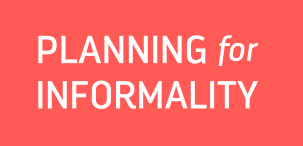Introducing Planning for Informality
Isandla Institute | 05 July 2017 | 0 comments
Last year global leaders adopted the New Urban Agenda at the Habitat III convention. This convention is held every 20 years where policy directions are discussed and enacted. News websites were abuzz at the news that the New Urban Agenda will set a new global standard and policy direction for sustainable urban development, and blogs featured in-depth discussions on the detailed recommendations for planning, managing, financing, conserving and living in cities of the present and future.
Through Resolution 109 of the New Urban Agenda, global leaders promise that, “We will consider increased allocations of financial and human resources, as appropriate, for the upgrading and, to the extent possible, prevention of slums and informal settlements, with strategies that go beyond physical and environmental improvements to ensure that slums and informal settlements are integrated into the social, economic, cultural and political dimensions of cities”.
In South Africa a policy redirection on informal settlements took place over the past decade; one that shifts away from ‘eradicating’ informal settlements through provision of mega housing projects on the outskirts of towns and cities, towards one that incrementally improves services, public spaces, facilities and social and economic development in already existing settlements. Overarching policies and strategies such as the National Development Plan (Vision 2030) and the Integrated Urban Development Framework also demand of municipalities to develop strategies for the improvement of informal settlements.
But where do you turn to learn about the strategies city governments in South Africa are adopting to improve informal settlements? Are these strategies, policies and by-laws appropriate and reflective of the principles contained in national and global consensus? Are we seeing a shift in practice among elected councilors and municipal officials?
Turn the pages of any daily or weekend newspaper and you will read about protest actions, barricading transport routes, demands for better services, threats of evictions, violence against councilors, destruction of municipal property, and so on. How do these promises of “integrated social, economic, cultural and political dimensions of cities” translate in the improvement of informal settlements?
These are the questions we asked when we started this research project. In the first year, we analysed each of the eight cities’ core municipal documents, which is available in the public domain at www.mfma.treasury.gov.za. The lack of discussion and interrogation of city plans for settlement improvement is frustrating. At the same time, there are many legal, political, financial and managerial complexities around informal settlement upgrading, which journalists and active citizens do not always appreciate.
Isandla Institue invites the public to the Planning for Informality web tool. Each year we will analyse municipal documents to update on where city governments stand in relation to informal settlement upgrading and the improvement of backyard shacks. We will write high quality analytical features to discuss the data we collect in more detail. This is an open data initiative and in doing so, we have customised this website to allow the public, officials and others in the know to contribute more fine-grained information and stories (backed by evidence) about what their cities (or other role players in the cities) are doing with regard to addressing informality. We worked with our partners in the development of the tool, and now invite the public to review, discuss and collaborate on pushing forward the agenda of upgrading of informality.


